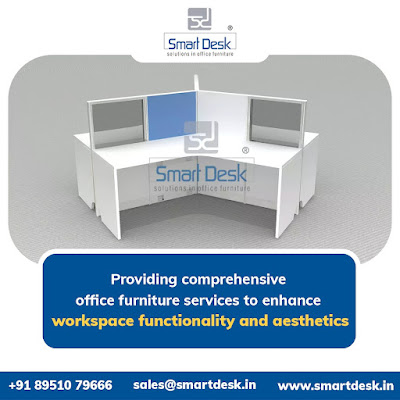Is Ergonomic Furniture Necessary in Your Office?
In the bustling world of office dynamics, where productivity is paramount and employee well-being is increasingly recognized as crucial, one often overlooked aspect is the furniture we use. While it might seem like a minor detail, the choice of office furniture can significantly impact both the physical health and productivity of employees. Enter ergonomic furniture - the unsung hero of modern workspaces.
Understanding Ergonomics
Ergonomics is the science of designing products and environments to fit the people who use them, optimizing both comfort and efficiency. In an office setting, this translates into furniture and equipment that support natural body posture, reduce strain and discomfort, and promote overall well-being.
The Hidden Costs of Discomfort
Uncomfortable office furniture might seem like a minor inconvenience, but its long-term effects can be far-reaching. Prolonged sitting in poorly designed chairs, for example, can lead to a myriad of health issues, including back pain, neck strain, and even musculoskeletal disorders. These not only result in decreased productivity due to discomfort and distraction but can also lead to increased absenteeism and healthcare costs for both employees and employers.
Boosting Productivity and Morale
Investing in ergonomic furniture is more than just a preventive measure against health issues; it's a strategic move to enhance productivity and morale in the workplace. Comfortable employees are happier, more focused, and less likely to be distracted by discomfort or pain. By providing them with the tools they need to work comfortably, employers can create a more positive and conducive work environment that fosters creativity, collaboration, and overall job satisfaction.
Key Features of Ergonomic Furniture
Ergonomic furniture comes in various forms, each designed to address specific needs and preferences. Here are some key features to look for:
- Adjustability: Chairs, desks, and other furniture should be easily adjustable to accommodate different body types and preferences.
- Lumbar Support: Proper lumbar support helps maintain the natural curve of the spine, reducing the risk of back pain and discomfort.
- Armrests: Adjustable armrests can help alleviate strain on the shoulders and neck by supporting the arms in a relaxed position.
- Height-adjustable Desks: Sit-stand desks allow employees to alternate between sitting and standing, promoting better circulation and reducing the risk of sedentary-related health issues.
- Footrests: For shorter individuals or those with circulation issues, a footrest can help maintain proper posture and reduce strain on the legs and lower back.
The Bottom Line
In today's competitive business landscape, every advantage counts. By investing in ergonomic furniture, employers can not only safeguard the health and well-being of their employees but also improve productivity, reduce absenteeism, and enhance overall workplace satisfaction. It's a win-win solution that pays dividends in both the short and long term. So, the next time you're furnishing your office, remember: that comfort is key, and ergonomic furniture is the cornerstone of a healthy and productive workspace.
To know more about Ergonomics in Office Furniture, Please Click here


%20(1).png)
Comments
Post a Comment